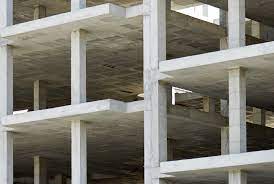Choosing the right flat slab for your construction project is critical to ensuring the structure’s strength, durability, and safety. Here are some key factors to consider when selecting a flat slab:
Load capacity:
The load capacity of the flat slab is one of the most important factors to consider when choosing a slab for your project. The slab must be able to support the weight of the structure and any additional loads, such as furniture or equipment. The load capacity of the slab will depend on several factors, including the thickness of the slab, the type of concrete used, and the reinforcement used in the slab.
Span length:
The span length of the slab is another important consideration. This is the distance between the supporting beams or walls. The longer the span, the thicker the slab will need to be to support the weight of the structure. If the span is too long, it may be necessary to use additional support beams or columns to provide additional support.
Height of the slab:
The height of the slab is also an important factor to consider. If the slab is too high, it may be difficult to install and may require additional reinforcement. The height of the slab will also affect the amount of concrete required and the cost of the project.
Soil conditions:
The soil conditions at the construction site will also affect the type of flat slab that is chosen. If the soil is unstable or prone to settling, it may be necessary to use a thicker or reinforced slab to ensure stability.
Building codes:
It is essential to consult with local building codes to ensure that the chosen flat slab meets all safety and building code requirements. This may include requirements for minimum thickness, reinforcement, and load capacity.
Type of concrete:
The type of concrete used in the flat slab will also affect its performance and durability. There are several different types of concrete available, each with its properties and characteristics. For example, high-strength concrete may be used for structures with heavy loads, while lightweight concrete may be used for structures where weight is a concern.
Reinforcement:
The reinforcement used in the flat slab is an essential consideration. This may include steel bars or mesh, or other materials such as fibers or polymers. The reinforcement is used to add strength and stability to the slab and may be required by building codes.
Cost:
Finally, the cost of the flat slab is a significant consideration. This will depend on several factors, including the thickness of the slab, the type of concrete used, and the amount of reinforcement required. It is essential to work with an experienced contractor to determine the most cost-effective solution that meets all safety and building code requirements.
In summary, selecting the right flat slab for your project involves careful consideration of several factors, including load capacity, span length, height, soil conditions, building codes, type of concrete, reinforcement, and cost. It is critical to work with an experienced contractor who can help you navigate these factors and ensure that your project is safe, durable, and cost-effective.

